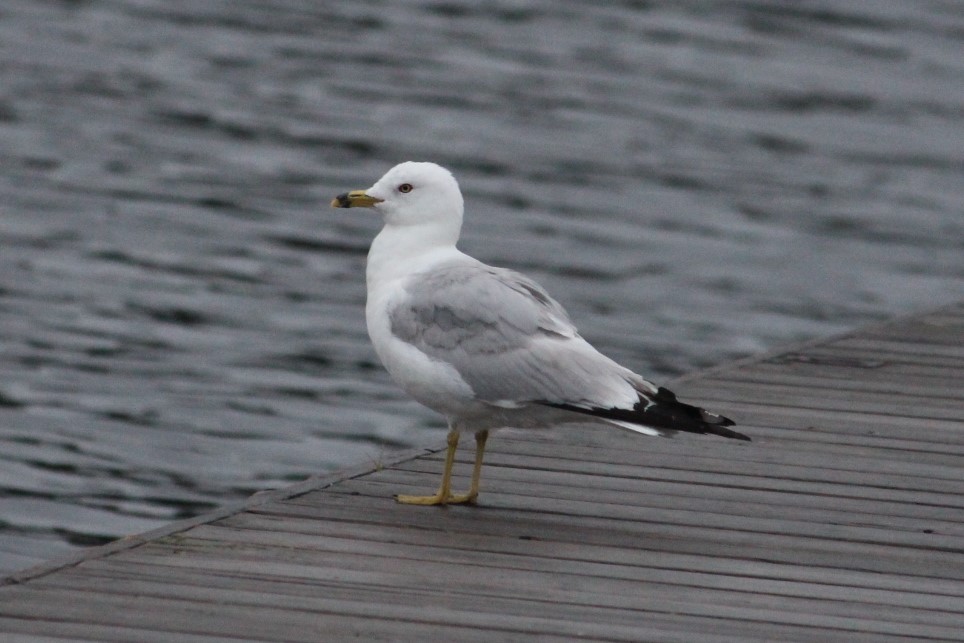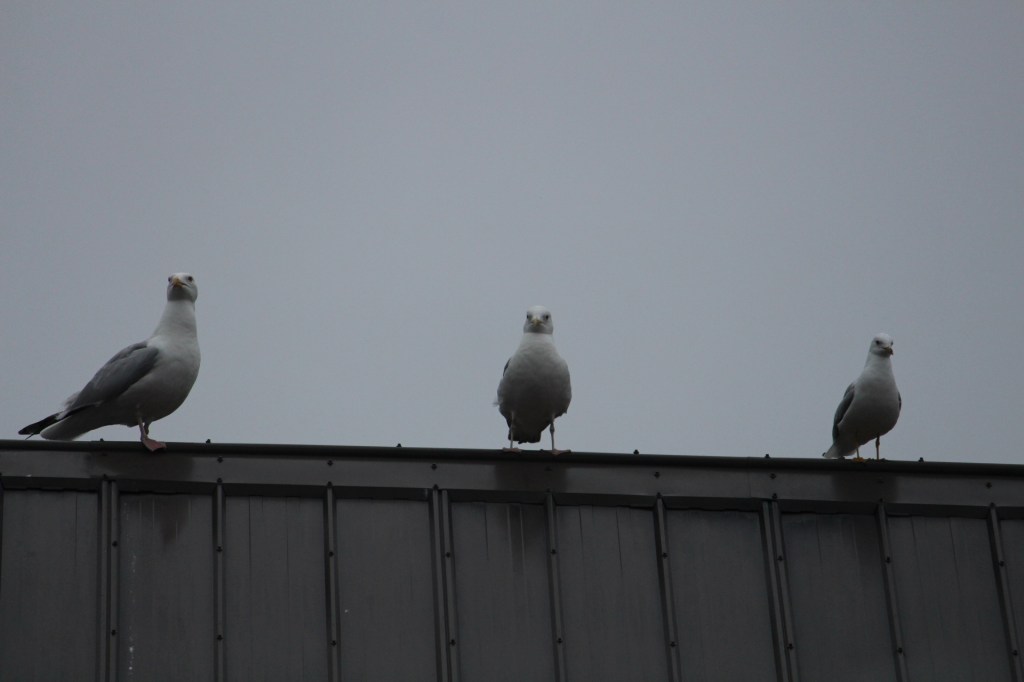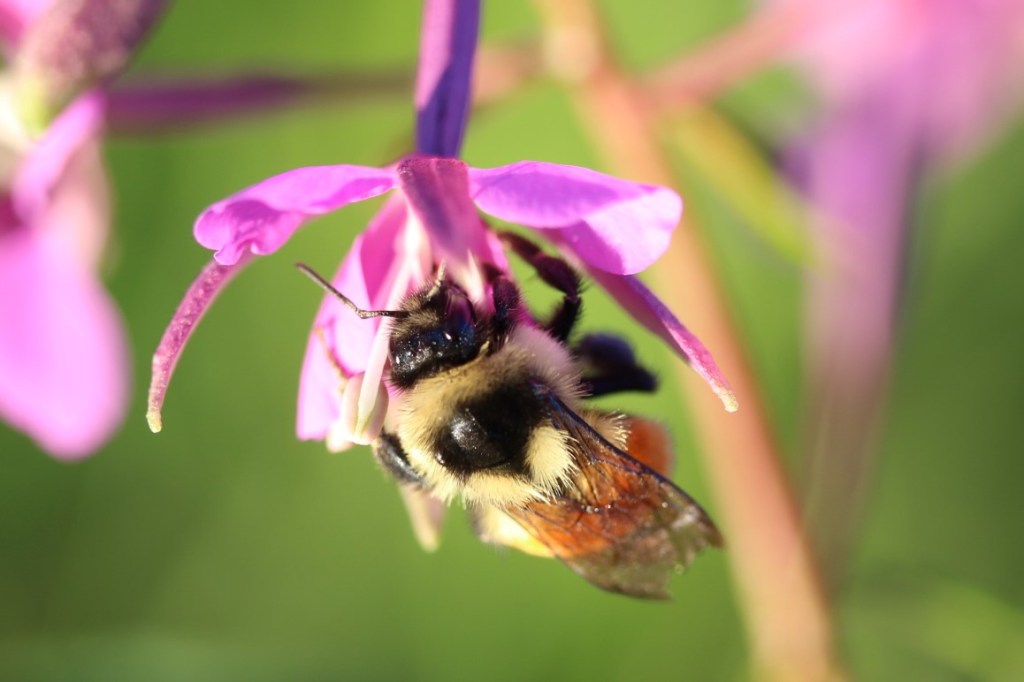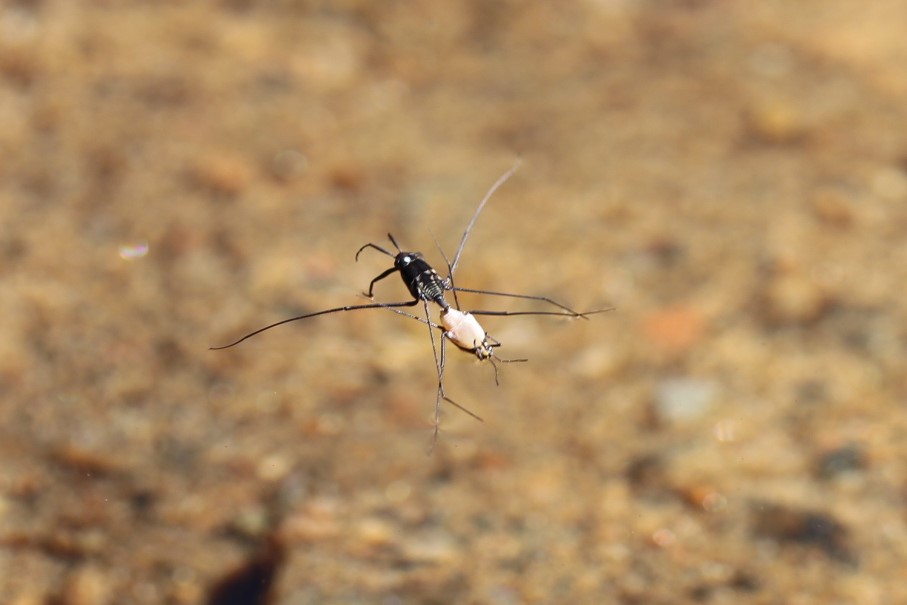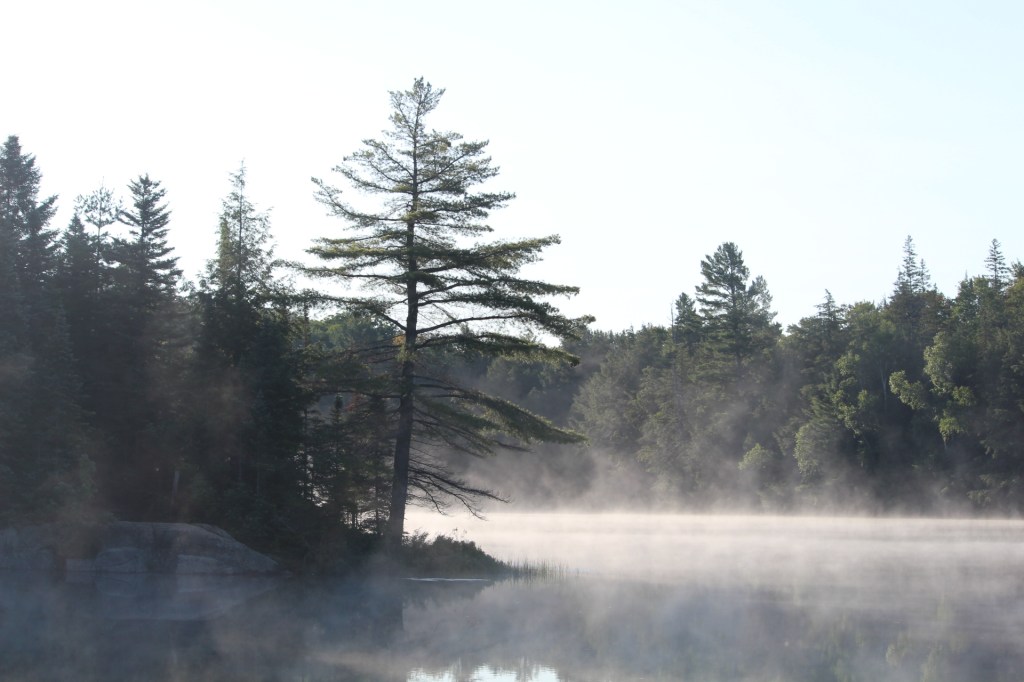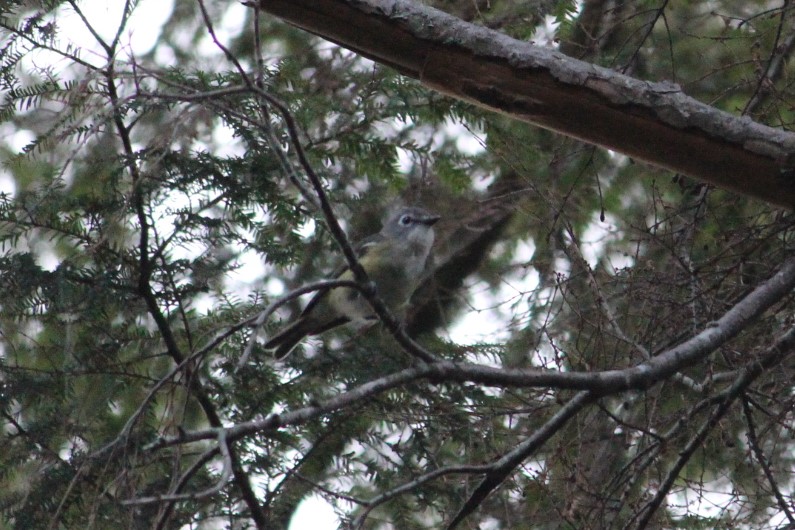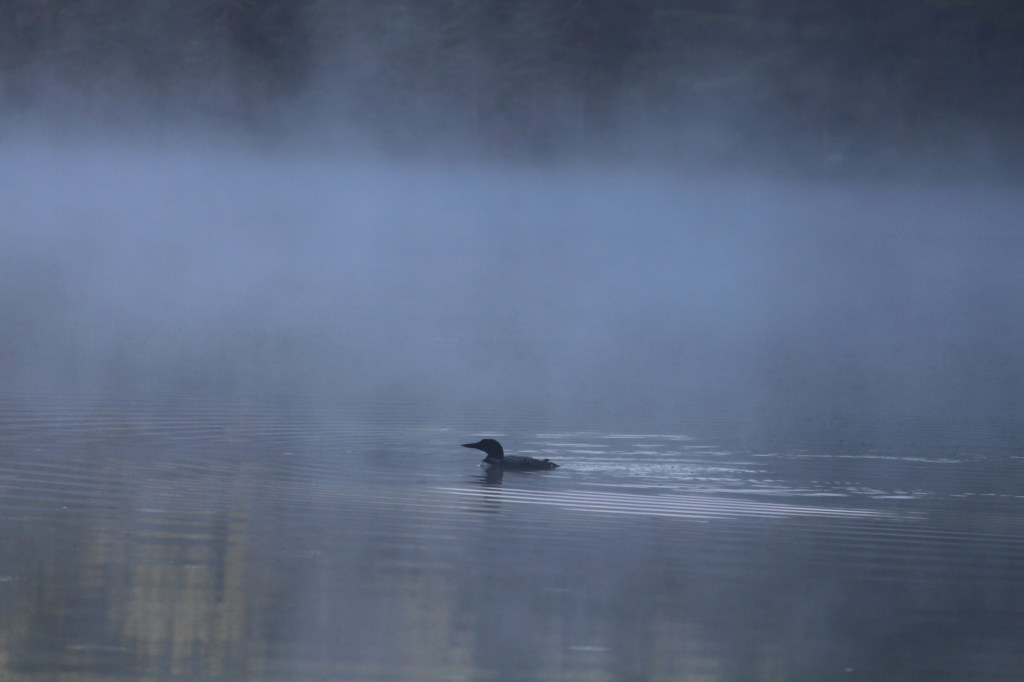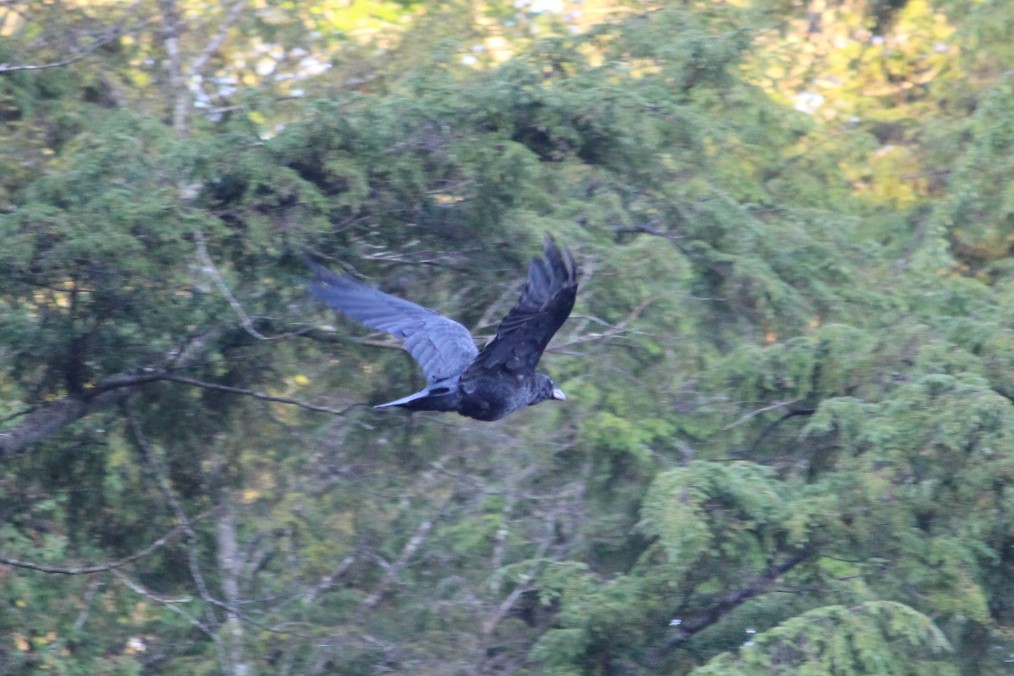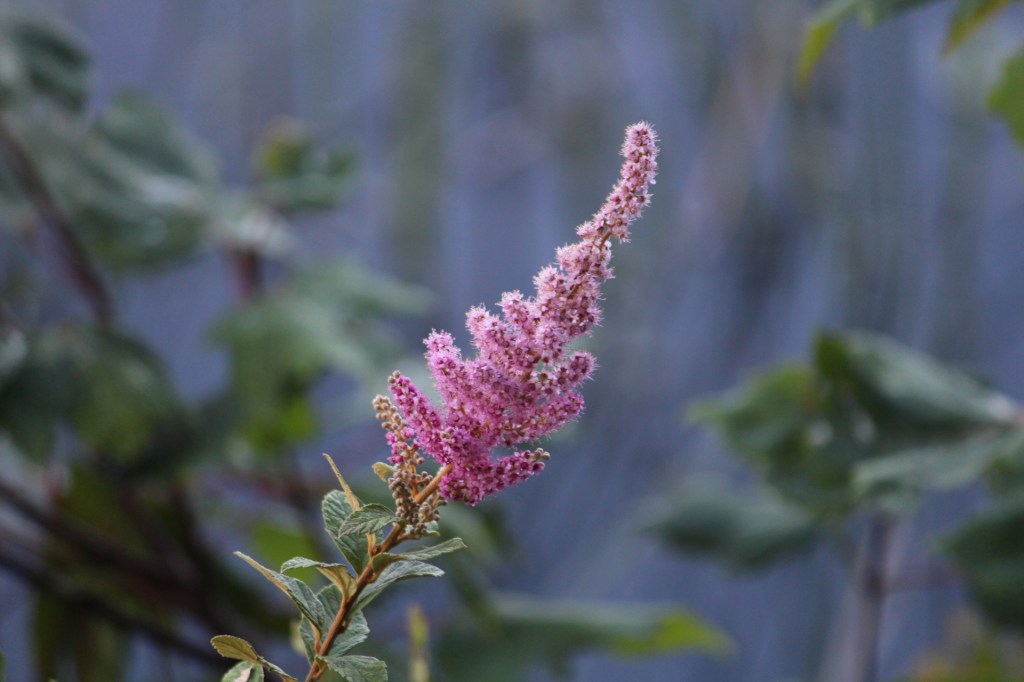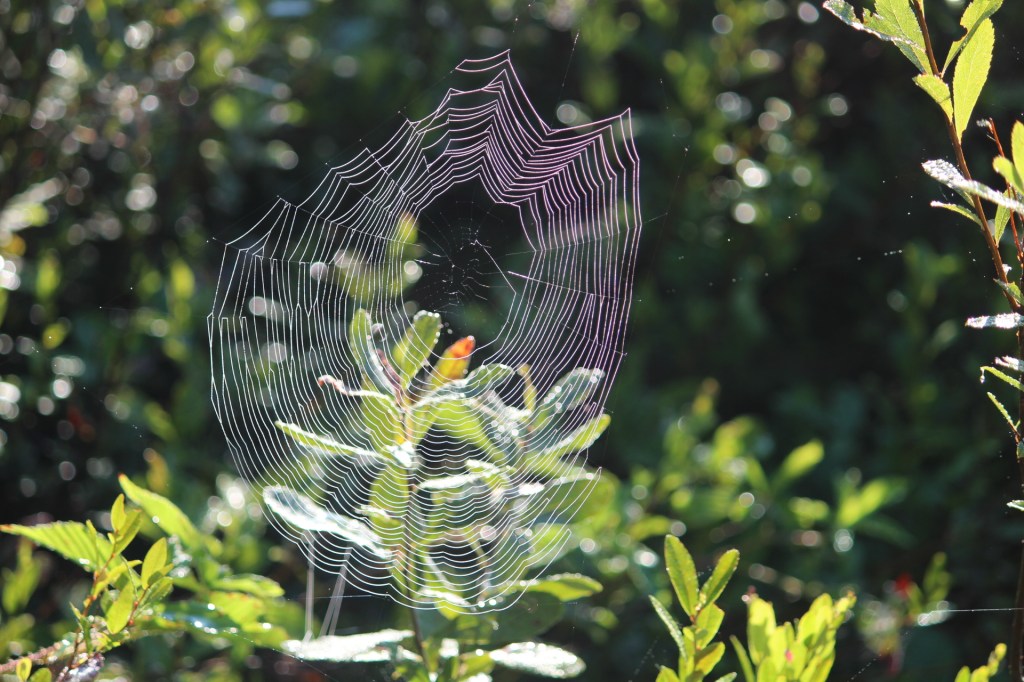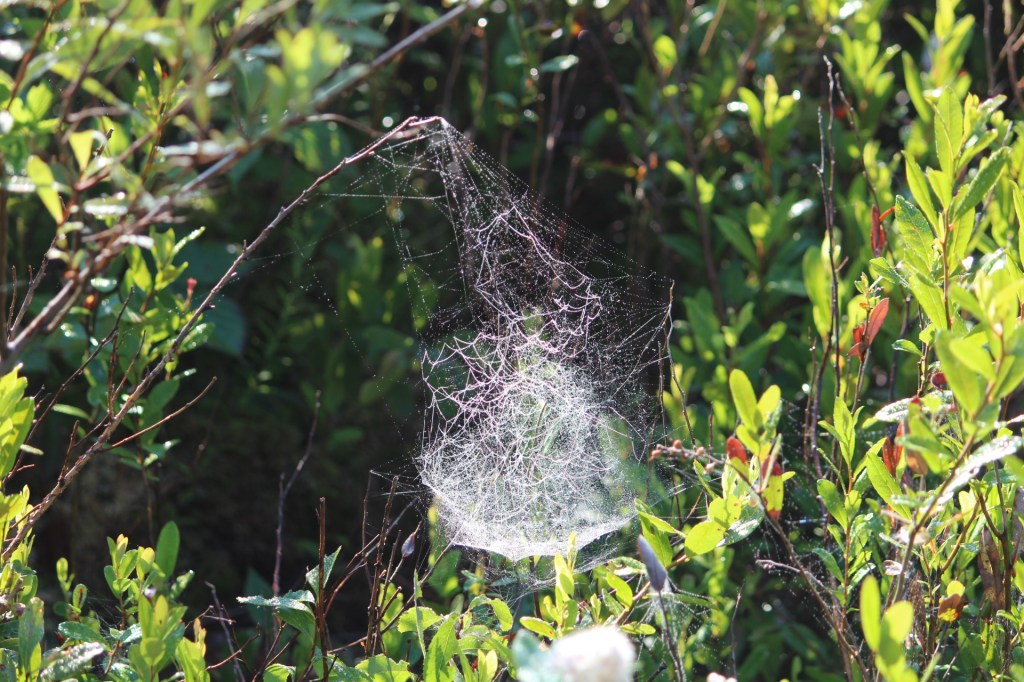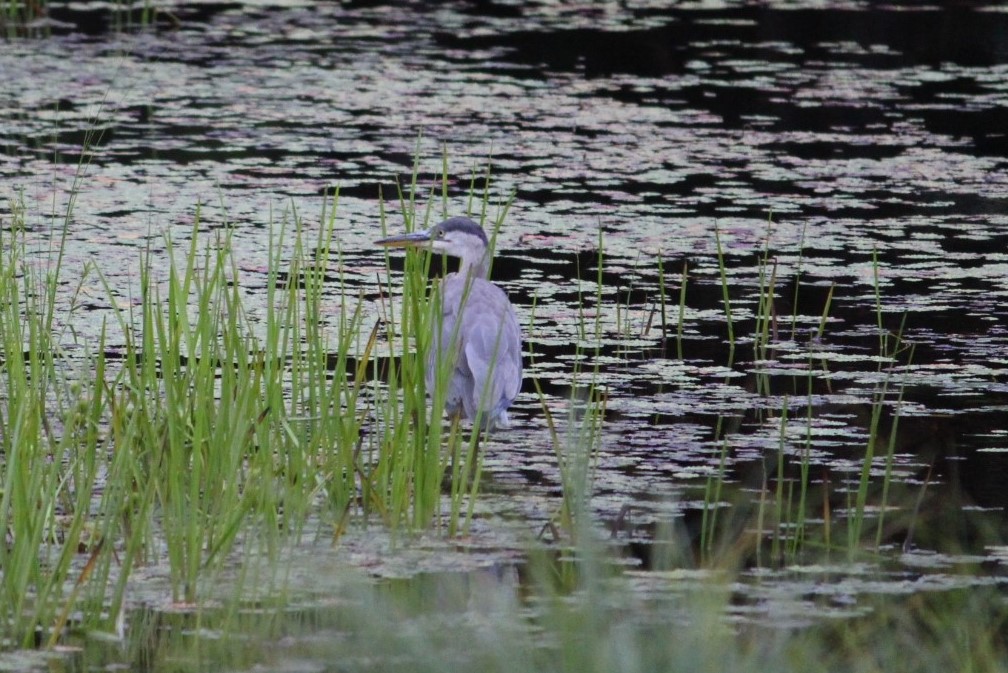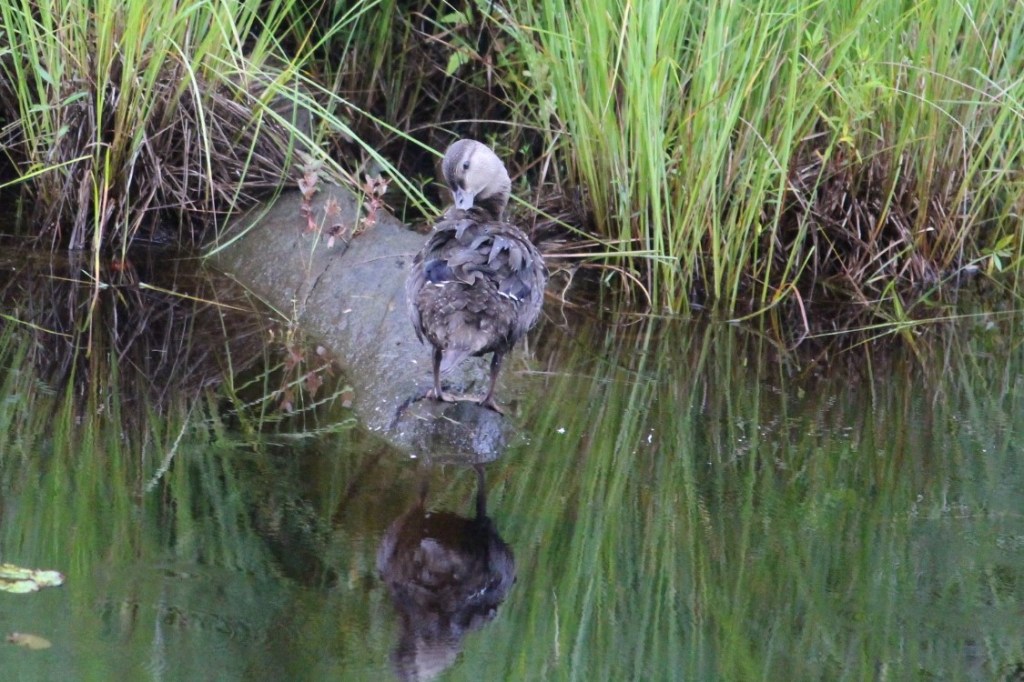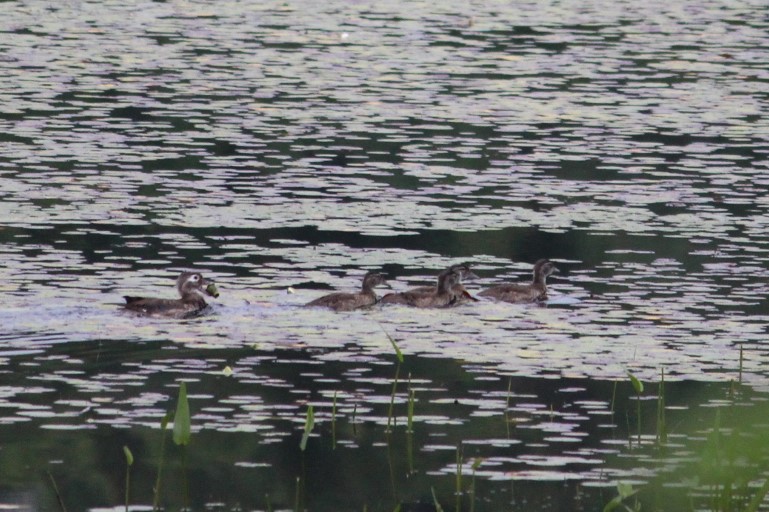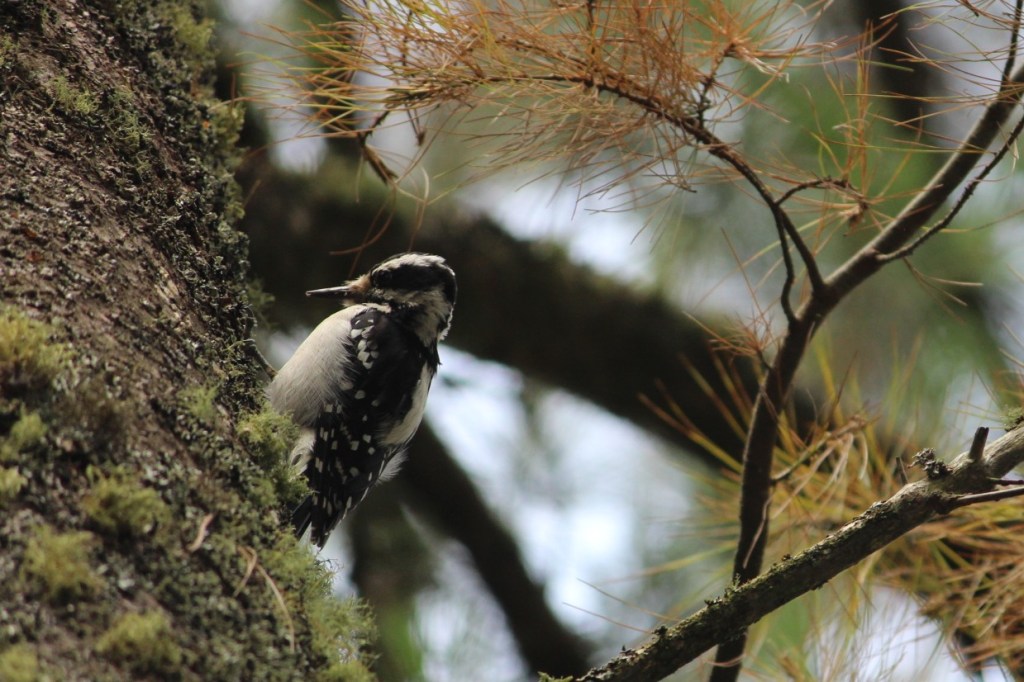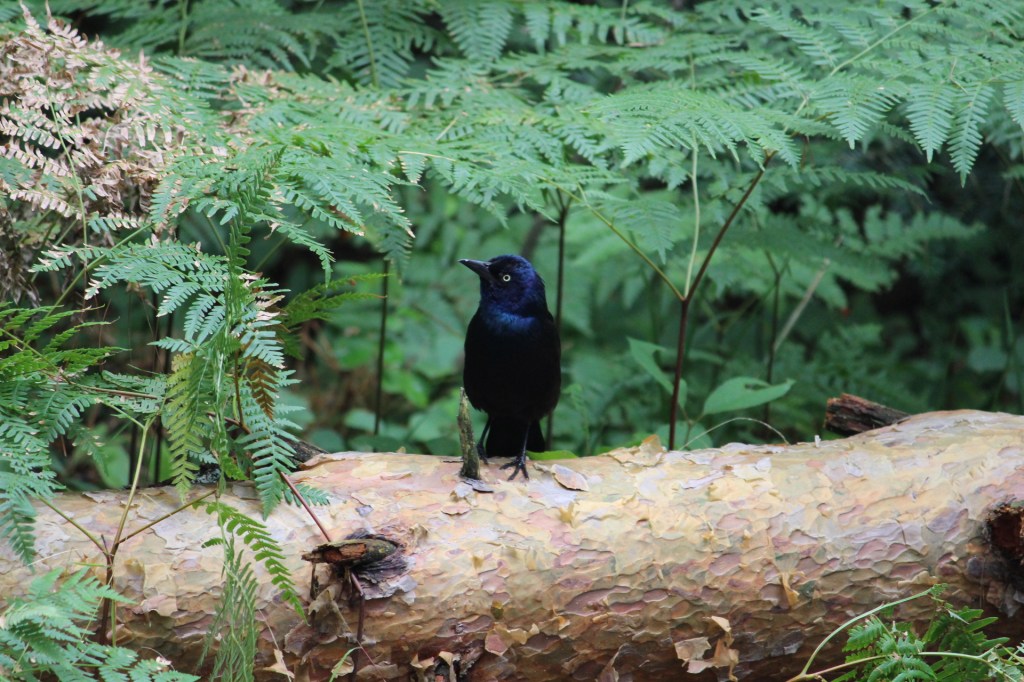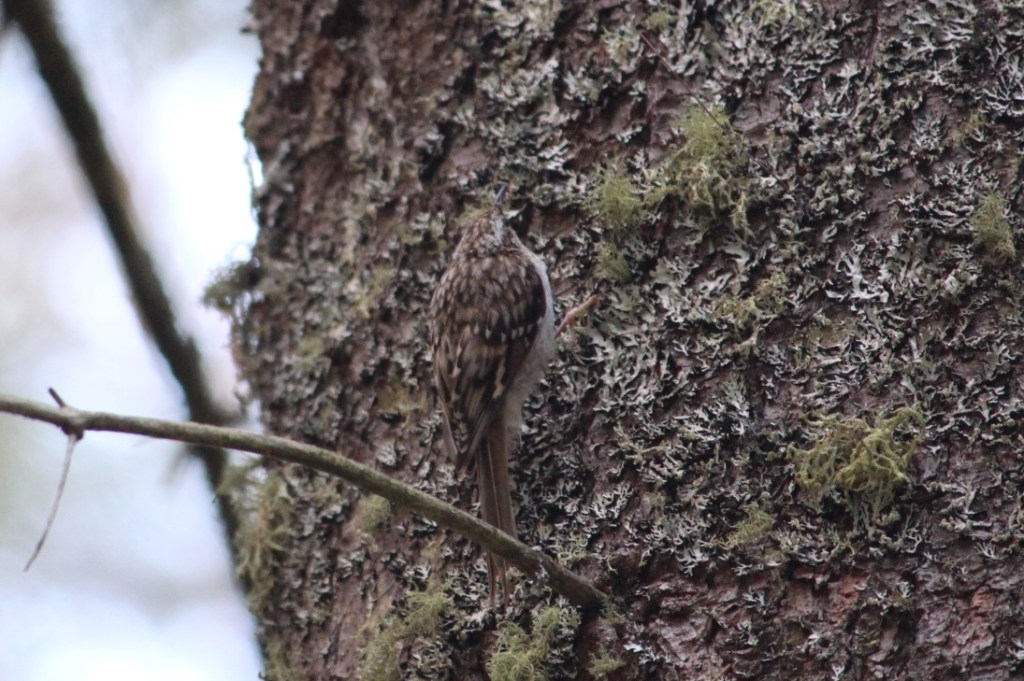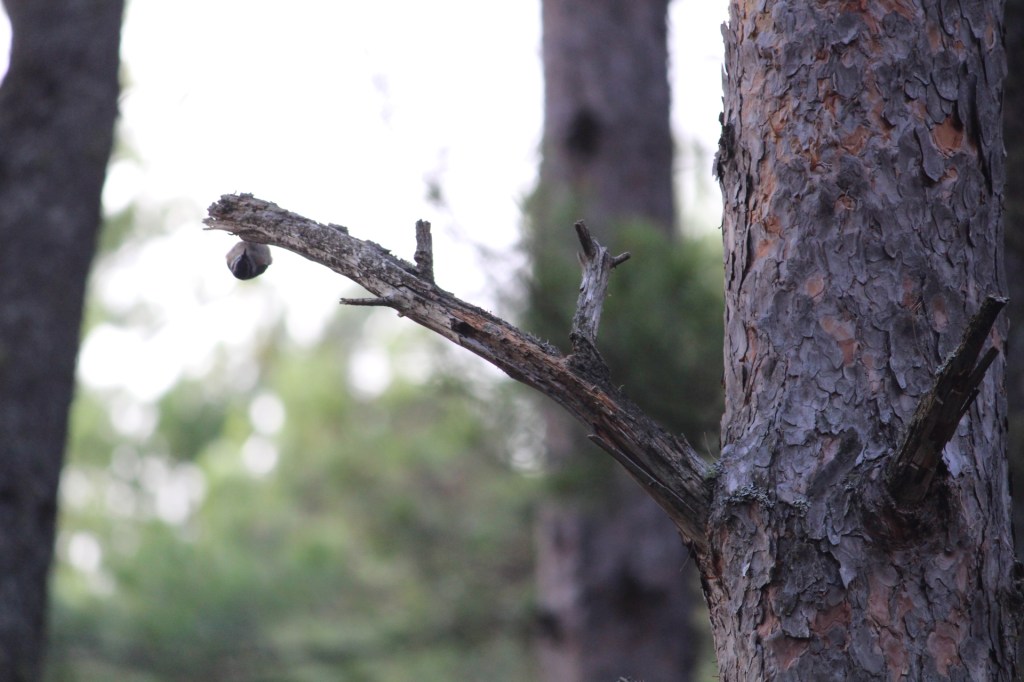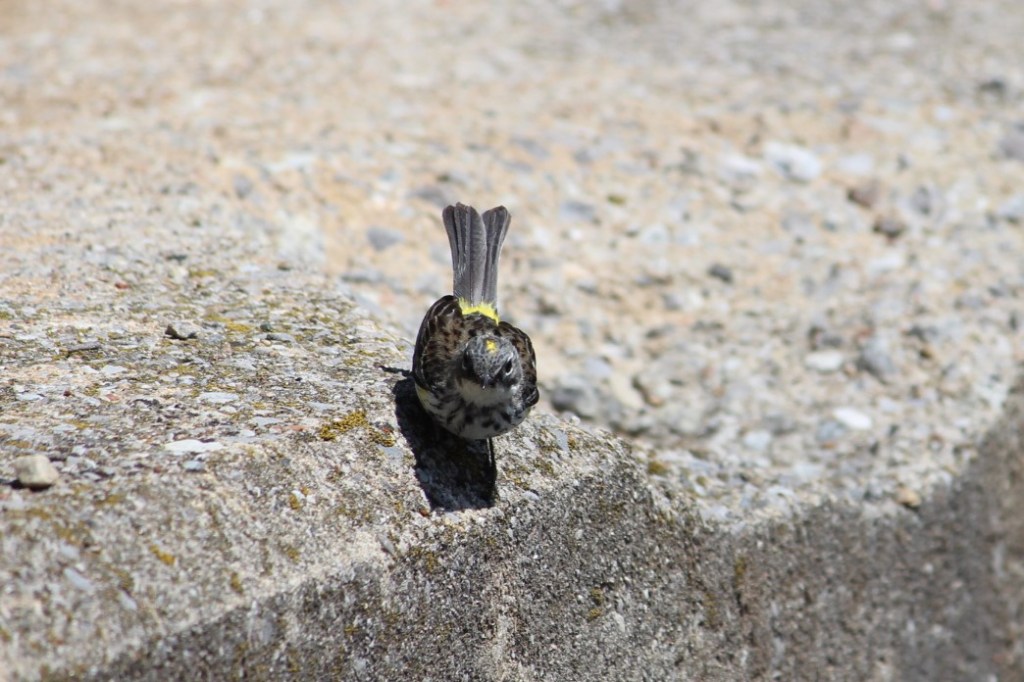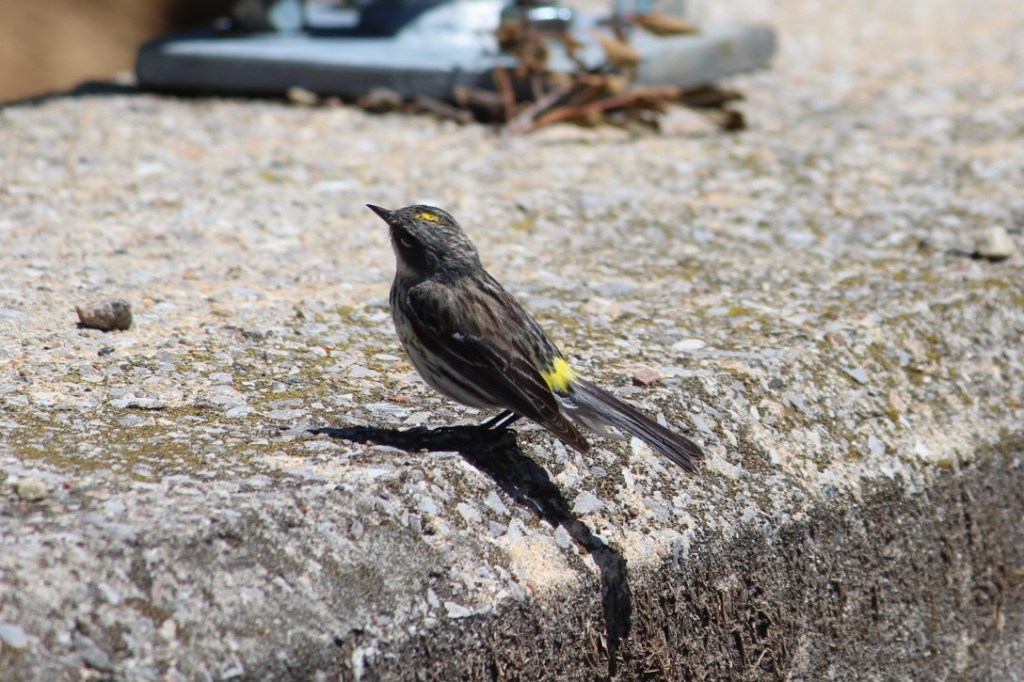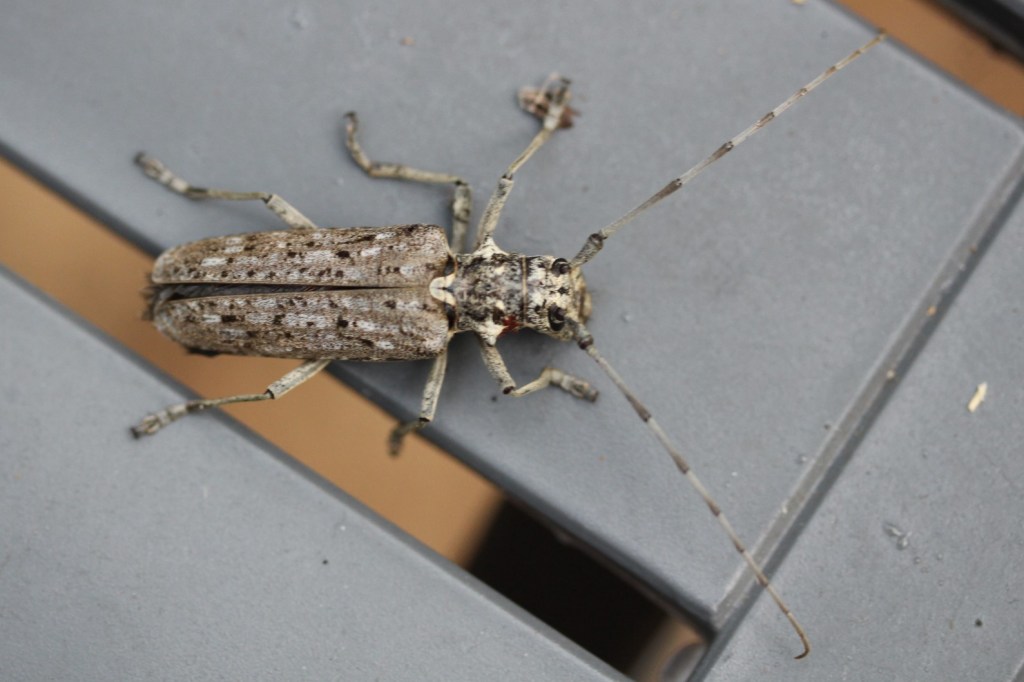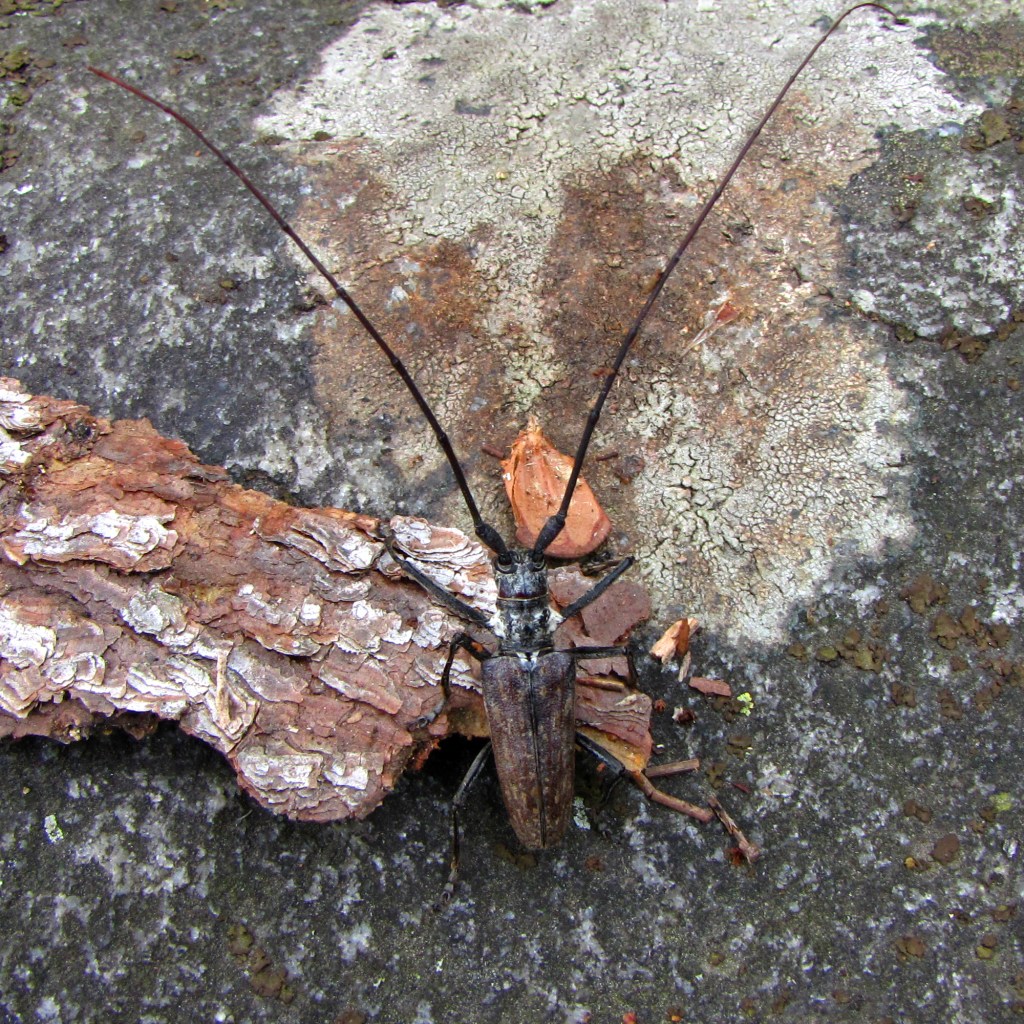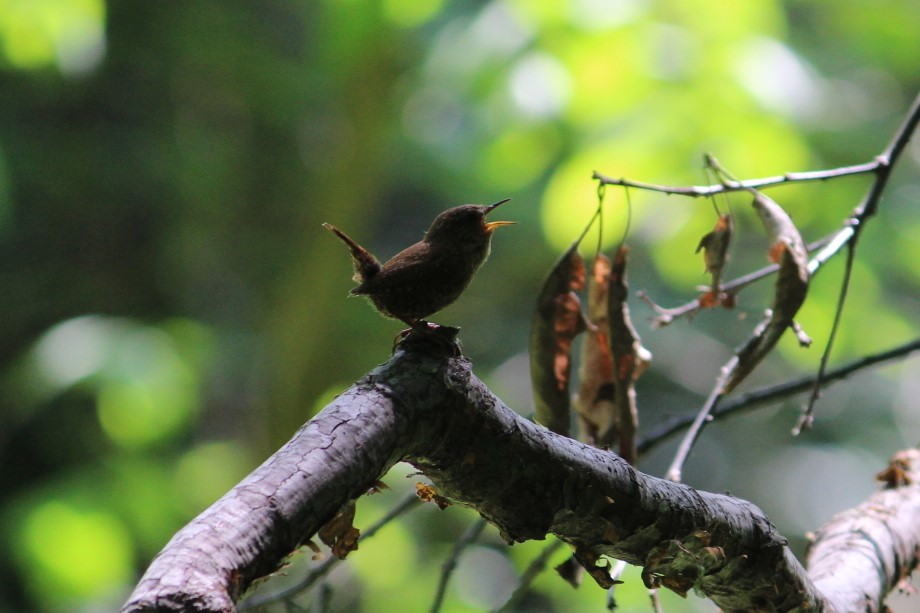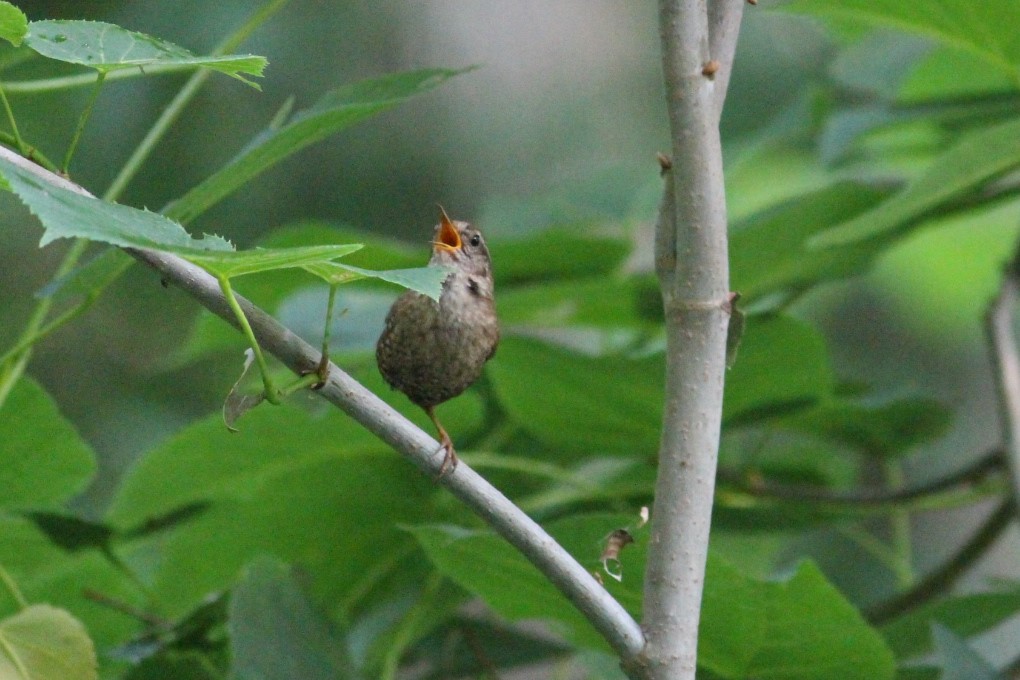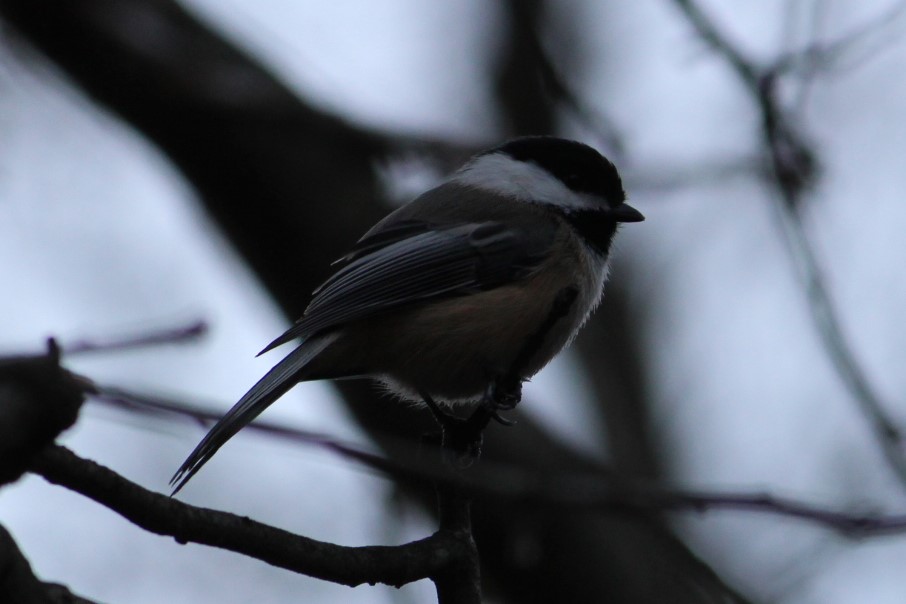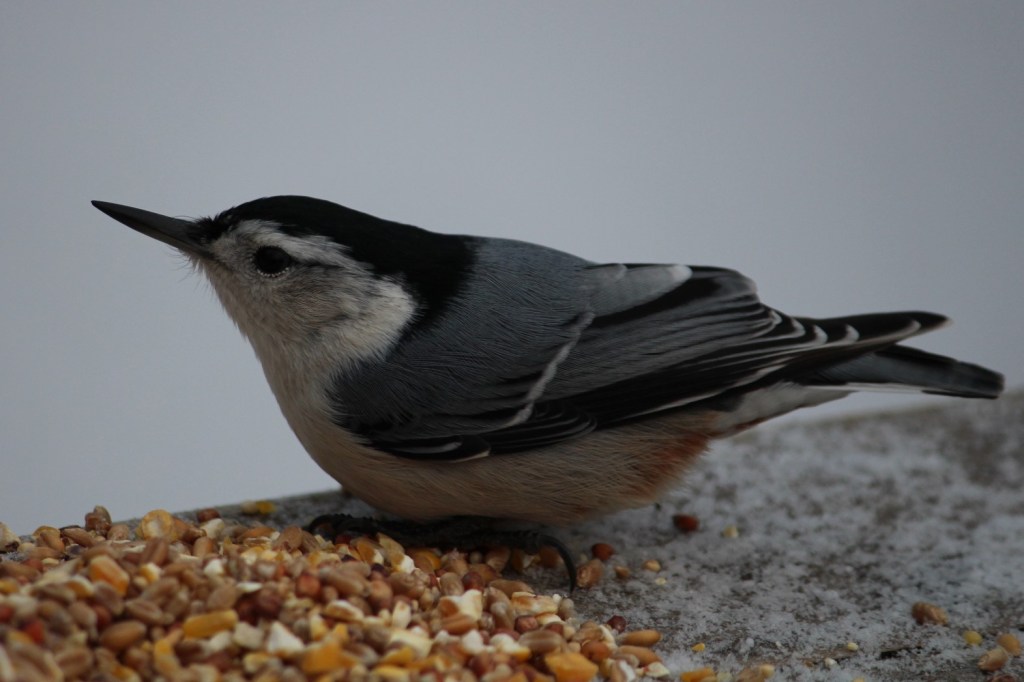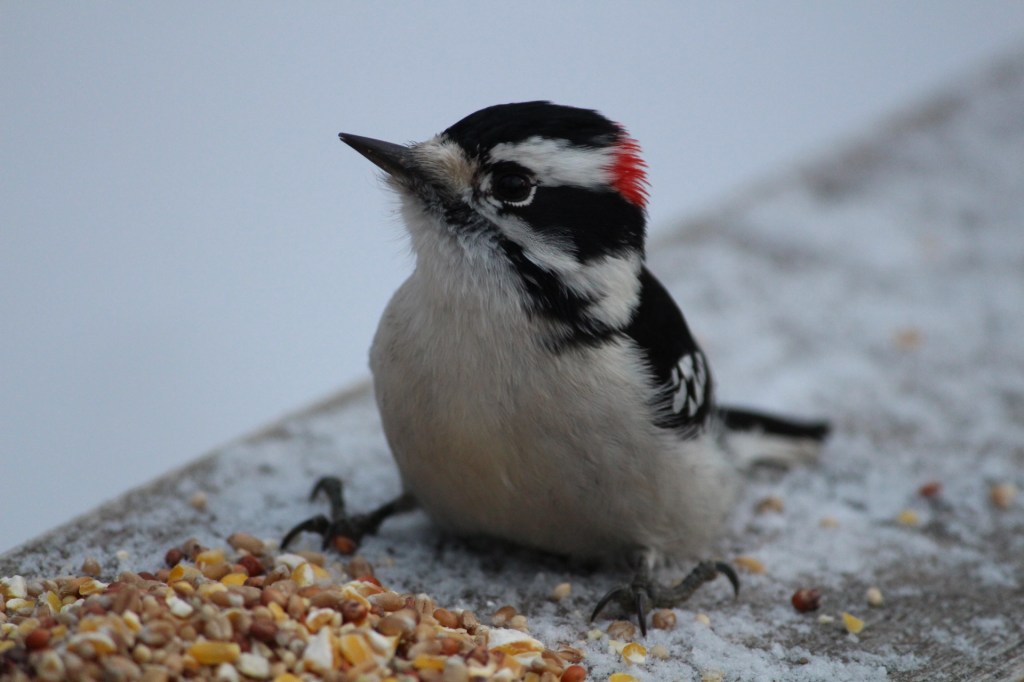Last year, as part of the Norfolk Field Naturalists, I was able to present 20 of my photos and discuss them. That was what prompted my still-ongoing “Top 20 Nature photos 2013-2020” series (Links to Introduction, 1. The Pale-Painted Sand Wasp (Bembix pallidipicta, 2. Moose (Alces alces) Family , 3. Canada Jay (Perisoreus canadensis) , 4. Common Five-Lined Skink (Plestiodon fasciatus) , 5. Robber Fly Hunting Queen Ant ). This year, I am able to present another 20 photos. I’ve decided this time to keep the range of selection and the range of discussion much more condensed and to form it around my blogging year and my blog’s namesake locality: Norfolk County, Ontario. By keeping the time constrained to a single year, representing each month at least once and the location constrained to a single county in Southern Ontario, I think it can give a sense of the turning of the seasons, something I’ve always been fascinated by. One further restriction is I tried to avoid photos/organisms that have already featured on my blog this year. Introduction complete, here come the photos of my blogging year in review:

Sandhill Cranes (Antigone canadensis) in Port Rowan, December 2021:
These beautiful birds are a sight to see in the winter, snow falling around their dancing forms. Their resonant trumpeting calls, and their acrobatics in the white fields are breathtaking.
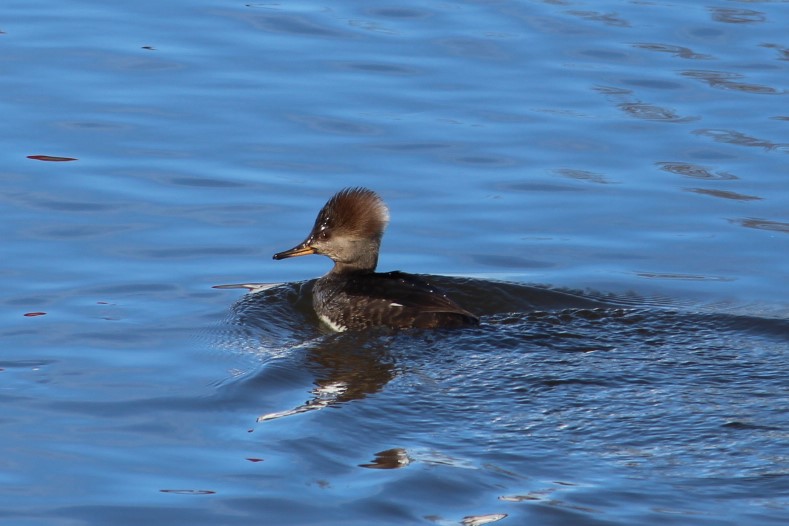
Hooded Merganser (Lophodytes cucullatus) in Simcoe, January 2022:
I’m always pleased to find a species near to home, which I associate with farther away. I first encountered Hooded Mergansers in Algonquin Provincial Park, so I think of them as something from the wild north rather than my own county, but this past January, I took some photos of a female swimming through a park in downtown Simcoe.
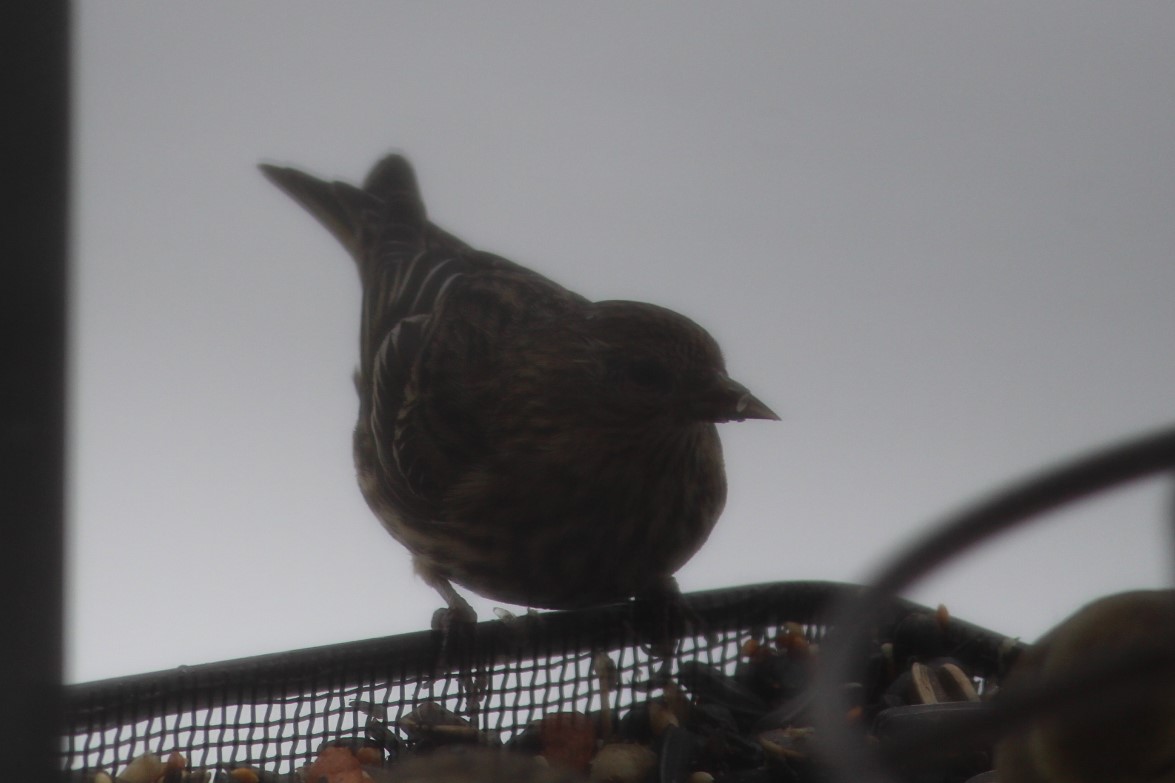
Pine Siskin (Spinus pinus) in my backyard, February 2022:
While reading through nature books and articles, I have read often of Pine Siskins moving through my area during the Winter in some years, and I had always hoped to see them. This year was the first time I saw them, and while my photographs are not very high quality (taken through my back windowpane), I was very excited to see and document this species at my backyard bird-feeder.
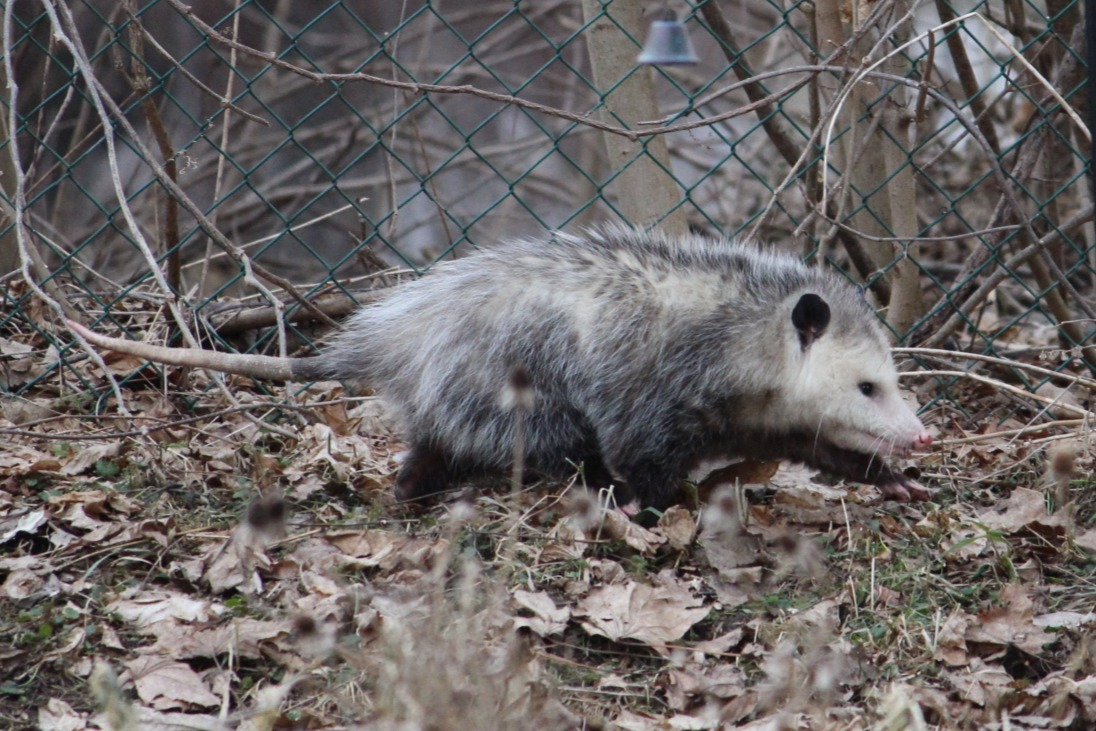
Virginia Opossum (Didelphis virginiana) in my backyard, March 2022:
Virginia Opossums are the only marsupials in Canada, part of a diverse group of mammals that are distinct from the placentals which make up the rest of the Canadian mammals. People often shorten the name to “possum” but this is technically incorrect for these animals. Pouched mammals in the New World (ie. North and South America) are known as ‘opossums’ while those in the Old World (Mostly Australasia for this group) are called ‘possums’.

American Winter Ant (Prenolepis imparis) in my backyard, March 2022:
These common ants are active early in the Spring and late in the Fall, which is how they acquired their association with Winter (Ellison et. al. 2012). Some workers of this species can store excess amounts of food in their abdomens and become living storage canisters, much like the more well-known honeypot ants (Myrmecocystus in North American deserts, or Camponotus inflatus and Melophorus bagoti in Australian deserts) (Ellison et. al, 2012).

Eastern Cottontail (Sylvilagus floridanus) on my Parents’ Farm, April 2022:
The first members of this species were seen in Ontario in the 1860s. Prior to European colonization and agriculture (which opened up preferred habitat for them) these adaptable mammals were located further south in the United States and Mexico (Naughton 2012).
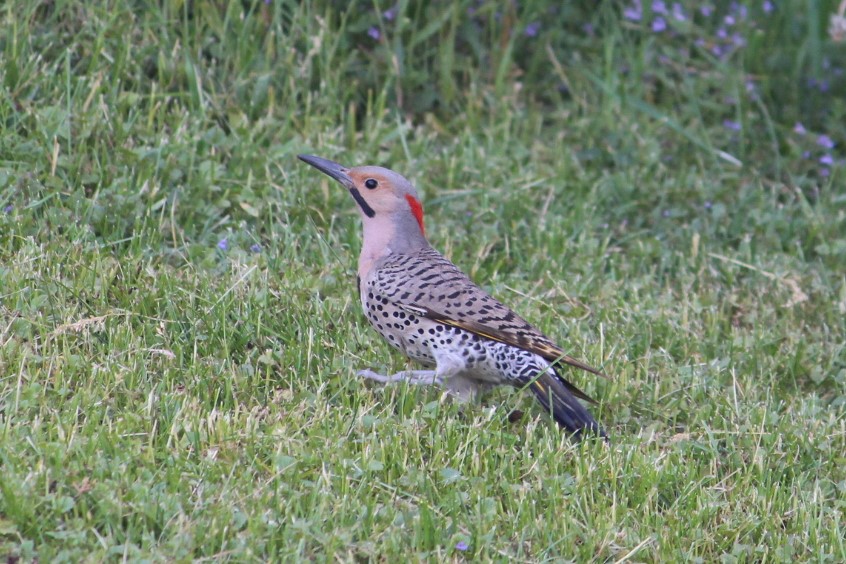
Northern Flicker (Colaptes auratus) in my backyard, May 2022:
Similar to my Hooded Merganser observation above, my first encounter with these amazing ground-foraging woodpeckers has coloured my appreciation for them as unique and surprising. I first saw Northern Flickers when driving through MacGregor Provincial Park in the early morning. Their speckled pattern was striking but even more distinctive was the way they move, like woodpeckers hopping up a tree trunk but horizontally on the ground surface rather than clinging to bark. Seeing a Northern Flicker in my own backyard was an exciting experience (it’s happened a few years now) and adds to my appreciation of the diversity all around me.

European Woolcarder Bee (Anthidium maniculatum) in my backyard, June 2022:
These solitary bees scrape the hairs off of leaves to line their nests (usually in a preexisting cavity in wood or plant stems). As the common name indicates, this particular bee species is introduced from Europe, and is the species you are likely to see in mid-summer (the native Anthidium species are active earlier in Spring) (Wilson and Carril 2016).
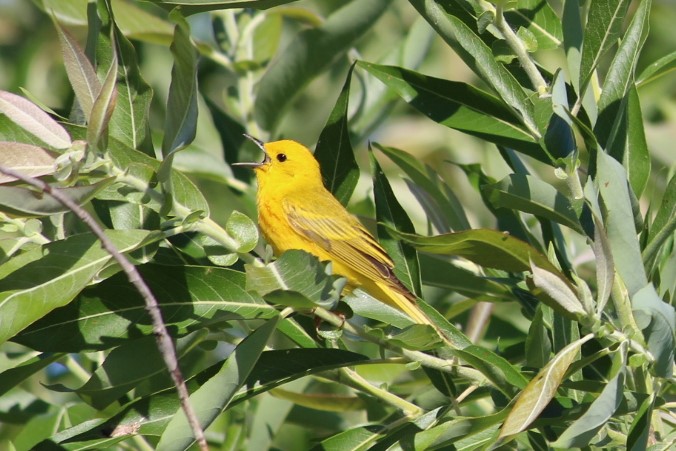
Yellow Warbler (Setophaga petechia) in Long Point, June 2022:
Migratory Warblers are always a treat to see in the Spring and Summer, and this colourful bird singing its heart out is one of my favourites. This species is widespread across North America and northern South America. In the more southern regions of its range, it may breed in mangrove swamps, while in Canada it can be found breeding in windswept tundra.
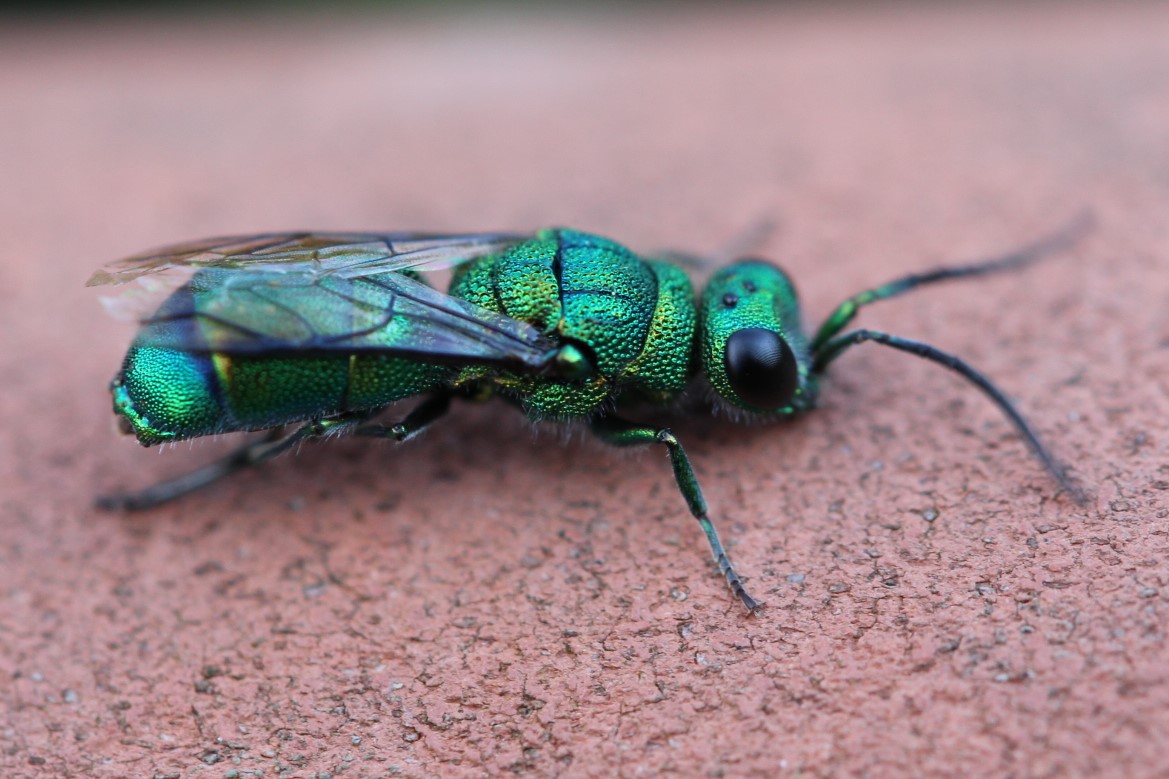
Cuckoo Wasp (Chrysis) in my backyard, July 2022:
Just as Cuckoos lay their eggs within another bird’s nest in order to benefit from the original inhabitant’s parental provisioning, so does the Cuckoo wasp benefit from another insect’s parental provisioning. In the case of this Genus, Chrysis, the female wasp lays her eggs inside the nest of other solitary wasps where the cuckoo wasp larva either feeds on the growing host wasp larva or the host larva’s food supply, placed in the nest by the host wasp parent (O’Neill 2001). The adult cuckoo wasp is well-armoured and can roll into a ball like an armadillo to present this tough shell as a defense against its hosts (Marshall 2006).
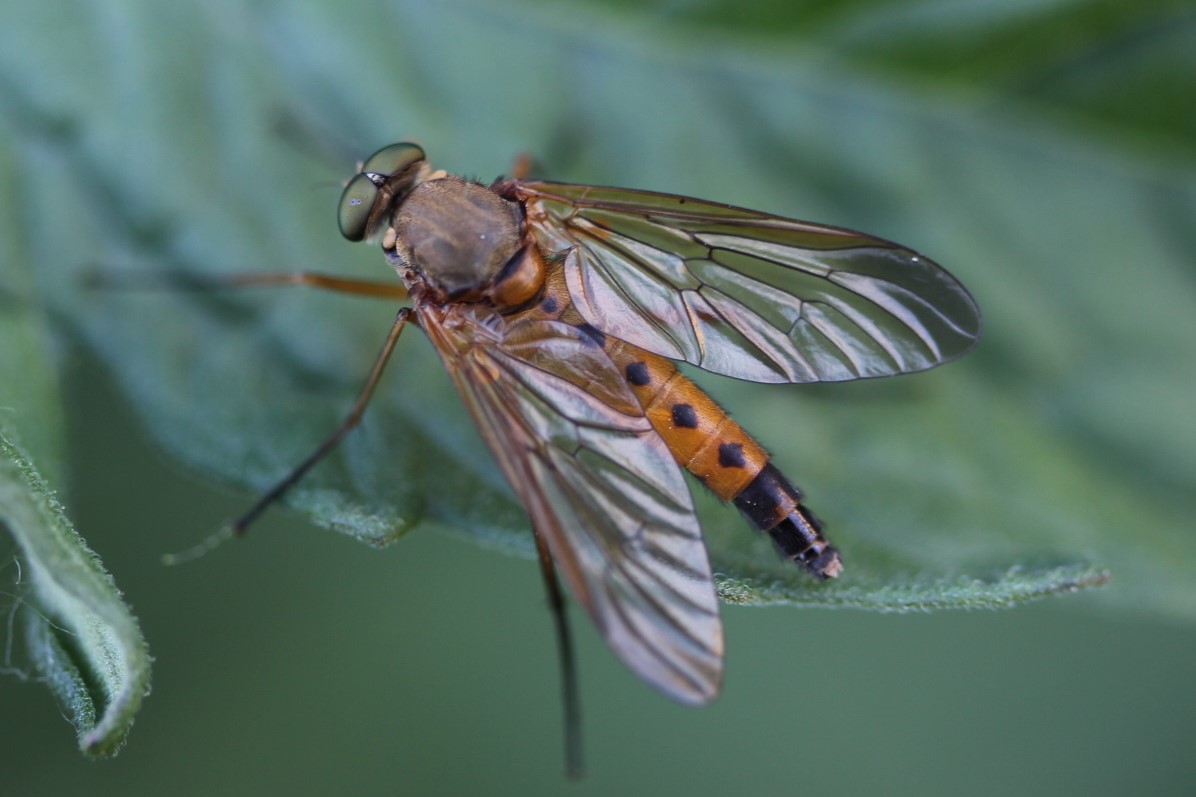
Marsh Snipe Fly (Rhagio tringarius) in my backyard, July 2022:
The larvae of Rhagio snipe flies are predators of invertebrates that dwell within the soil, but the adult diet (if they do eat anything) is unknown (Marshall 2012). This species, R. tringarius is introduced from Europe and is possibly replacing the similar native species, R. hirtus (Marshall 2012).

Eastern Cicada-killer Wasp (Sphecius speciosus) on my Parents’ Farm, July 2022:
Cicada-killer wasps are an example of a species that I had encountered significantly in print before encountering in the wild. I had read of their enormous size and strength, so when I spotted giant robust wasps on a visit to my parents’ farm I had my guess that these were the fabled hunters. These are impressive insects, but despite their large size and the males’ territoriality (the males will occasionally dive-bomb humans), they are not actually dangerous to people and should be tolerated and admired, rather than feared. The female can remove up to 1000 times her weight of soil to create her multi-celled nest which she provisions with adult cicadas (all of which used to be included within the genus Tibicen but which have now been moved to several genera (see Hill et. al. 2015 for a recent taxonomic review of the Cicada genus Tibicen)). Each larva is given 1-4 cicadas to feed on, males are given only 1 and female larvae more because females are sometimes 2.5 times larger than males (Evans and O’Neill 2007). The reason for this size disparity is that females do the digging and carry the giant prey items. The cicada-killers cannot carry paralyzed cicadas in flight unless they first drag them to a height and drop, which they will do occasionally in order to transport their large prey (Evans and O’Neill 2007).
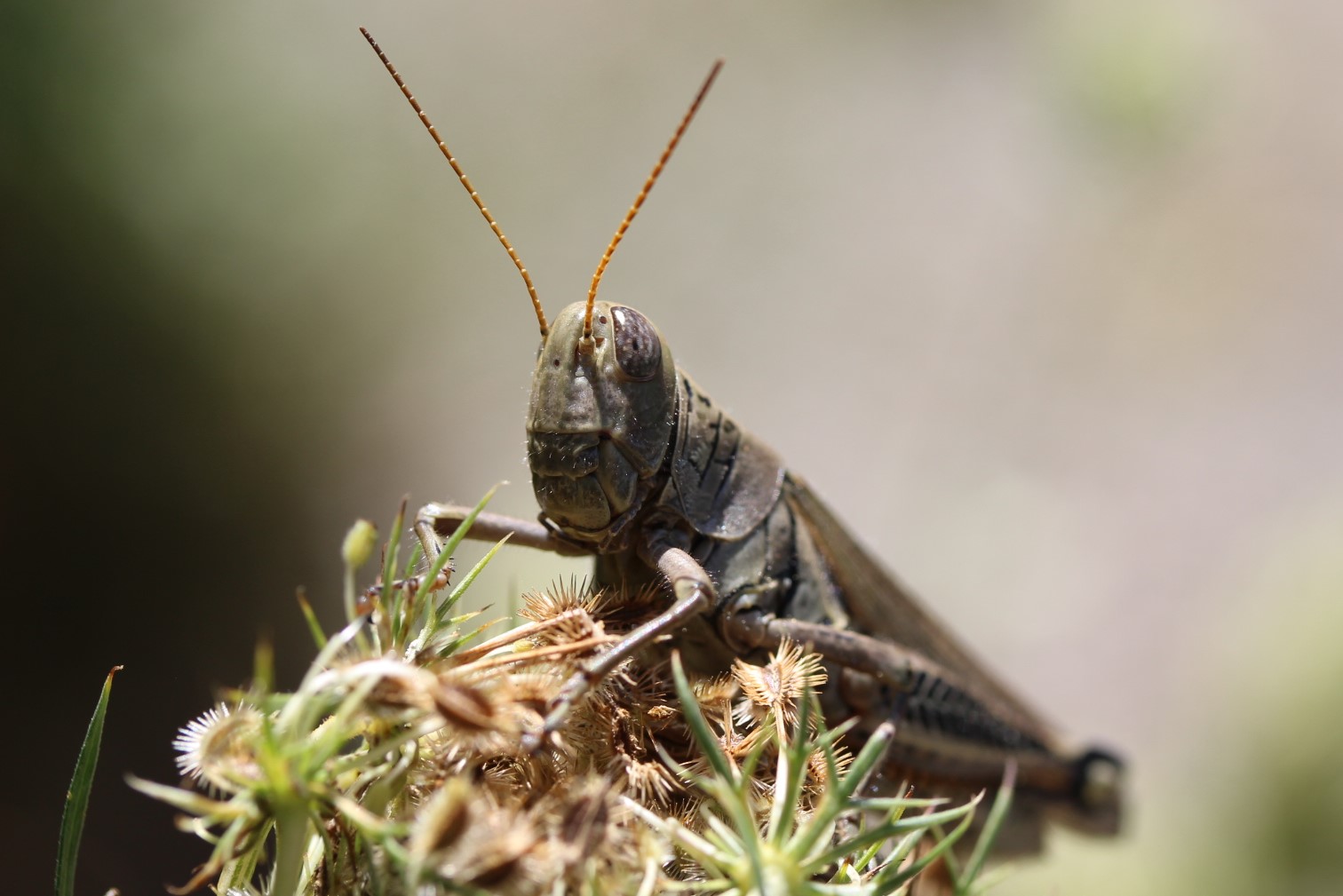
Differential Grasshopper (Melanoplus differentialis) in my Parents’ garden, August 2022:
This very large grasshopper can be up to 4.4 cm long and feeds on a variety of plants and crops (Marshall 2006).
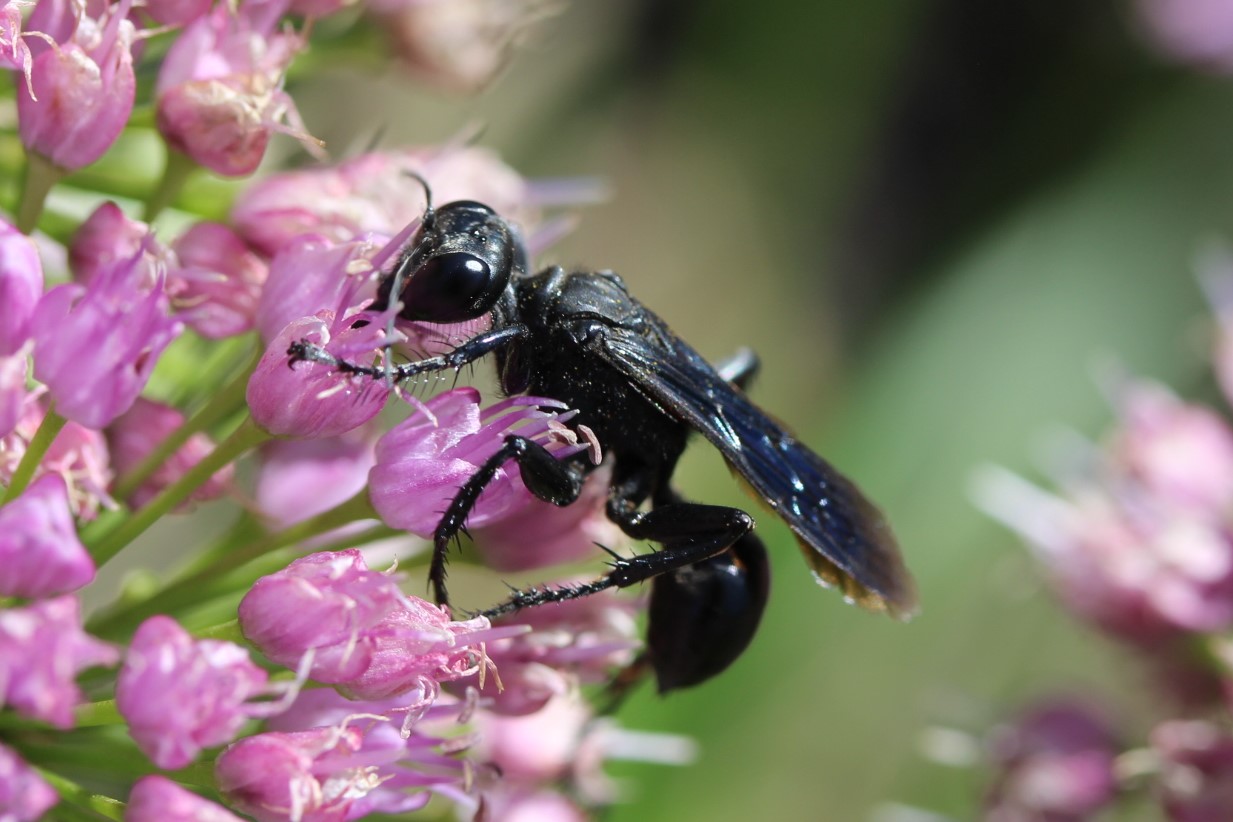
Prionyx atratus in my Parents’ garden, August 2022:
Prionyx atratus is a solitary wasp which hunts late-instar* or adult grasshoppers, like the one photographed on the same day in the same garden above. The wasps sting the grasshoppers on the head or thorax, and then construct a burrow in soil for their single prey item. Once the nest is constructed they will place the paralyzed grasshopper inside with an egg attached and close off the nest. While working on the nest, the female hunter will sometimes cache the grasshopper prey nearby (O’Neill 2001). Researching this species led to a rather alarming observation noted in O’Neill 2001: “I have seen the cached grasshopper prey of Prionyx species devoured by other grasshoppers”. It seems that grasshoppers are not always only plant-pests but will consume each other if given the opportunity.
*instar refers to any larval stage between moults, so a late-instar means a larval stage that is close to being an adult.

Northern Leopard Frog (Lithobates in Long Point, September 2022:
One foggy morning in September, I was out taking photos in Long Point. The main thing I was looking for was birds, but every step I took along the wetland trail was punctuated by the sound and motion of leaping frogs. Taking a closer look at the path, I managed to crouch down and capture some closeups of this Northern Leopard Frog, helpfully sitting very still.
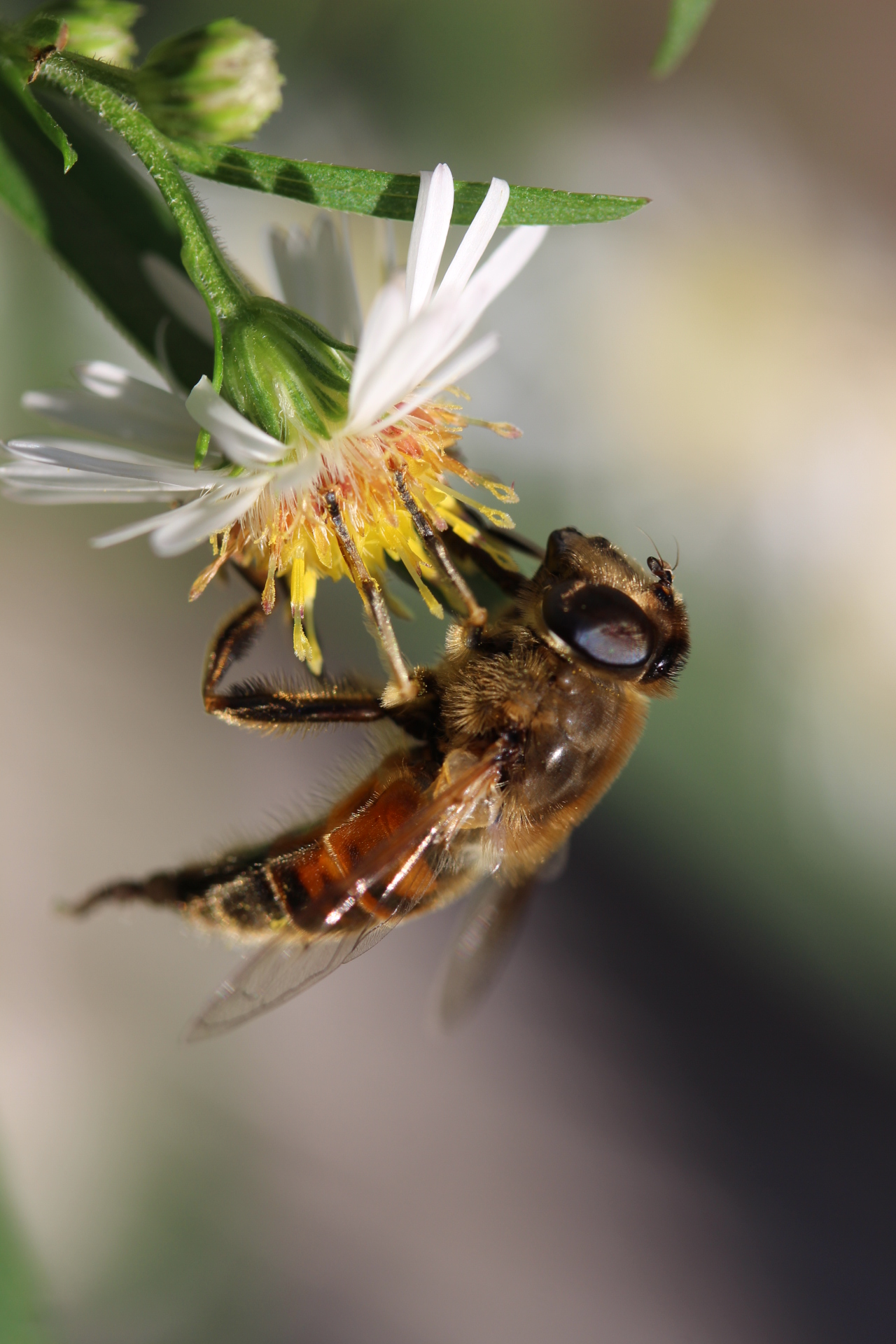
Common Drone Fly (Eristalis tenax) in my backyard, October 2022:
There comes a time in the year when insect populations begin to go into hiding or die off as Autumn and Winter creep upon the land. Every buzzing, whirring, crawling invertebrate at this time of year gains my attention all the more because I am conscious of the seasons’ turnings that will soon cover the flowers with snow and a hush will fall upon the local pollinators. So in October, I was quite excited to find a small gathering of pollinators right by my back step where an Aster was growing. This photo shows one such late-Fall insect: a Drone Fly.
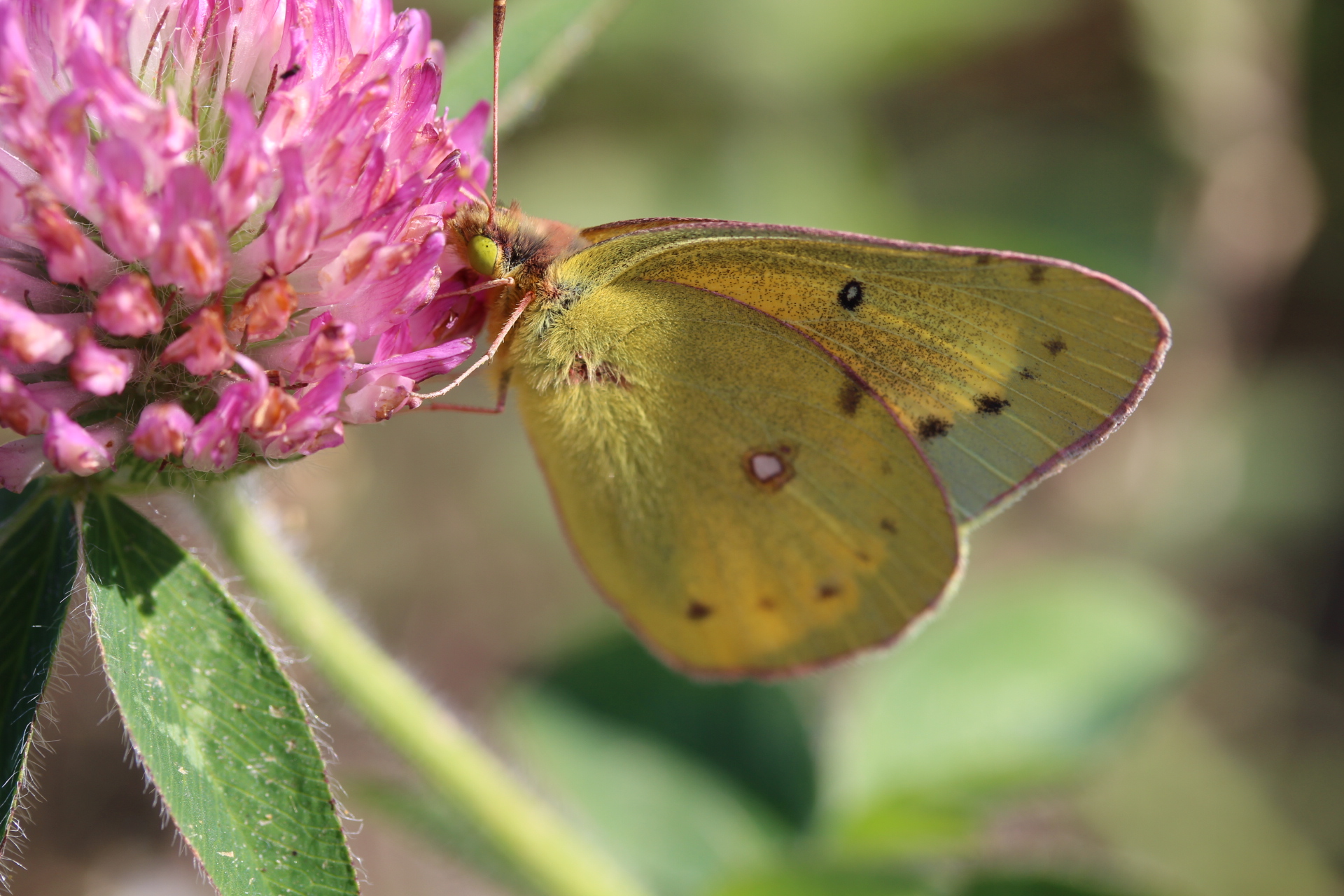
Orange Sulphur (Colias eurytheme) on my Parents’ Farm, October 2022:
Yet another late-flying insect caught my eye in October, this time a butterfly: an Orange Sulphur. This species of butterfly may or may not overwinter in Ontario. The adult individuals that we see in the Spring are likely migrants from its southern range (which includes Central America and the United States) (Hall et. al. 2014). I’m guessing this means that this individual spotted in the Fall was possibly on its way South to warmer climes.
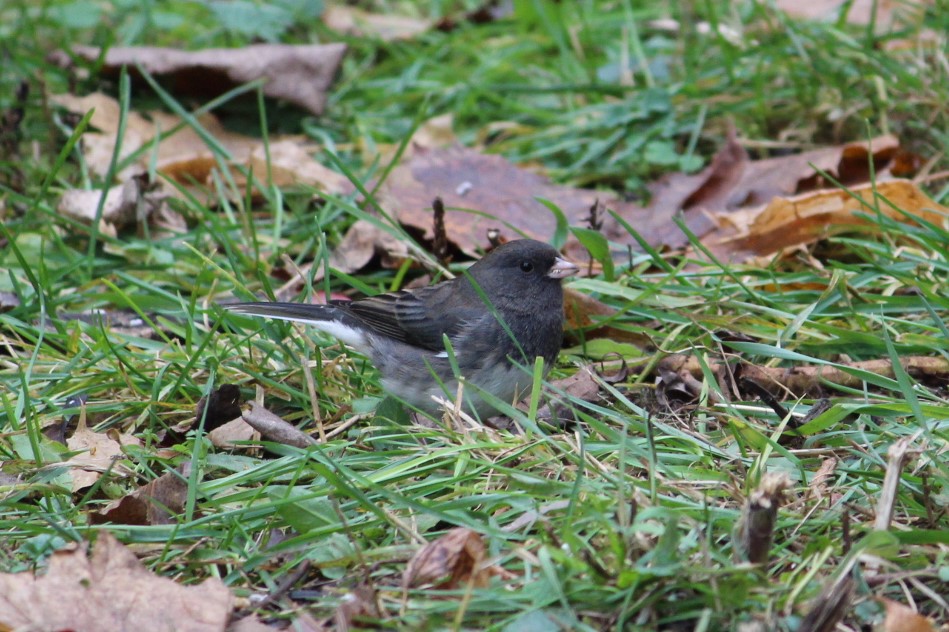
Dark-eyed Junco (Junco hyemalis) in my backyard, November 2022:
As I prepared to choose at least one photo from every month of the past year, I realized that I didn’t have any photos taken in November. So I rushed outside in my backyard to take some photos of the backyard birds at our feeders. My favourite picture was this of a Dark-eyed Junco. Juncos are familiar and common backyard birds, though they prefer to feed from the ground, rather than directly from the hanging feeders. I feel like this is a perfect species to end with: very common and familiar, found in my own backyard, yet I still find it exciting to see and observe these amazing creatures. I’m looking forward to next year, and can’t wait to see what other species I will wonder at and learn about through 2023.
References:
Ellison, Aaron, Gotelli, Nicholas, Farnsworth, Elizabeth, adn Alpert, Gary. 2012. A Field Guide to the Ants of New England. Yale University Press.
Evans, Howard and O’Neill, Kevin. 2007. The Sand Wasps: Natural History and Behavior. Harvard University Press.
Hall, Peter, Jones, Colin, Guidotti, Antonia, and Hubley, Brad. 2014. The ROM Field Guide to Butterflies of Ontario. Royal Ontario Museum.
Hill, Kathy, Marshall, David, Moulds, Maxwell, and Simon, Chris. 2015. “Molecular phylogenetics, diversification, and systematics of Tibicen Latreille 1825 and allied cicadas of the tribe Cryptotympanini, with three new genera and emphasis on species from the USA and Canada” Zootaxa Vol. 3985 No. 2: 10 Jul. 2015. [you can read the article yourself here: https://www.mapress.com/zootaxa/2015/f/zt03985p251.pdf] DOI: https://doi.org/10.11646/zootaxa.3985.2.3
Marshall, Stephen. 2006. Insects: Their Natural History and Diversity. Firefly Books.
Marshall, Stephen. 2012. Flies: Their Natural History and Diversity. Firefly Books.
Naughton, Donna. 2012. The Natural History of Canadian Mammals. University of Toronto Press.
O’Neill, Kevin. 2001. Solitary Wasps: Behavior and Natural History. Cornell University Press.
Wilson, Joseph, and Carril, Olivia. 2016. The Bees In Your Backyard. Princeton University Press.


